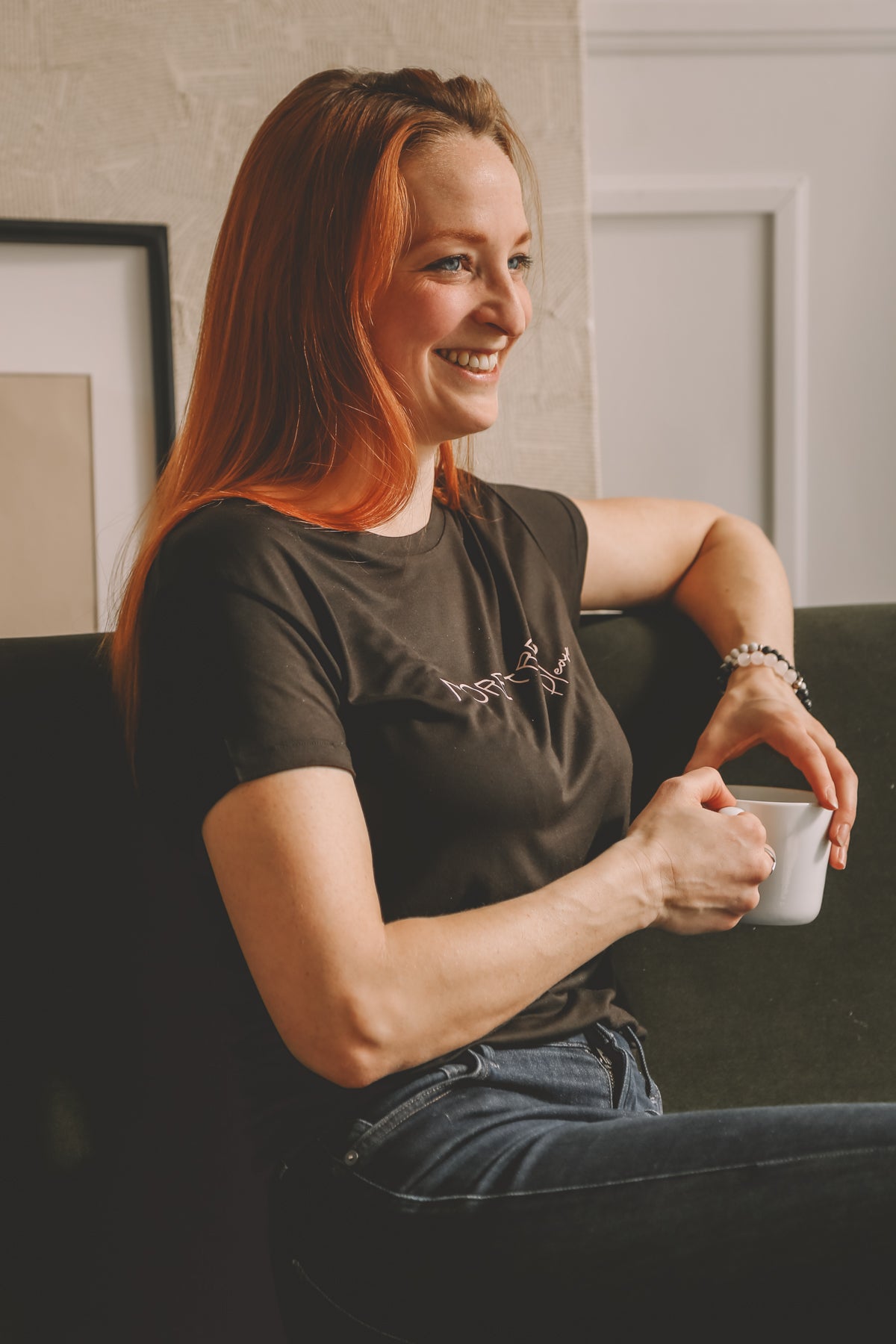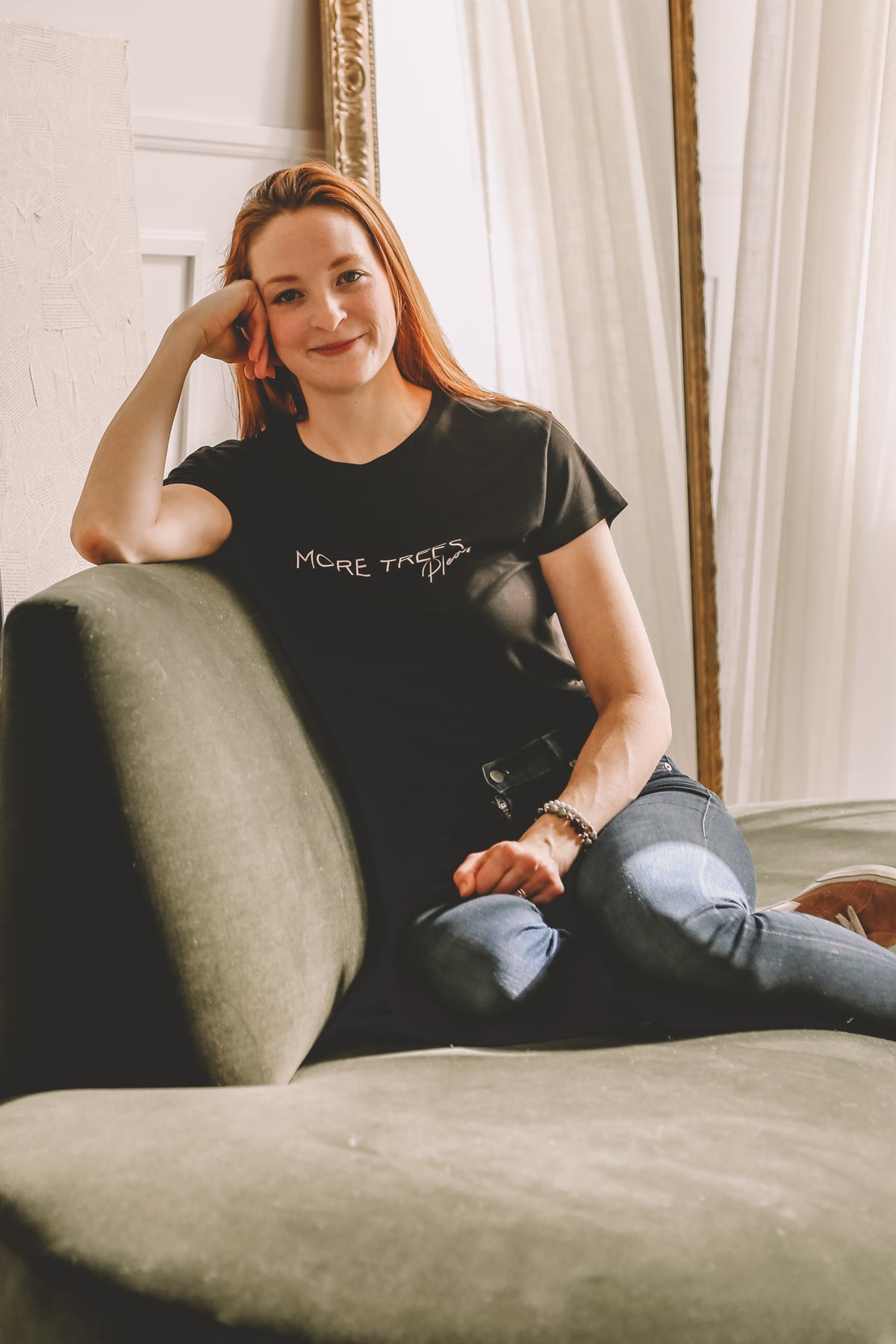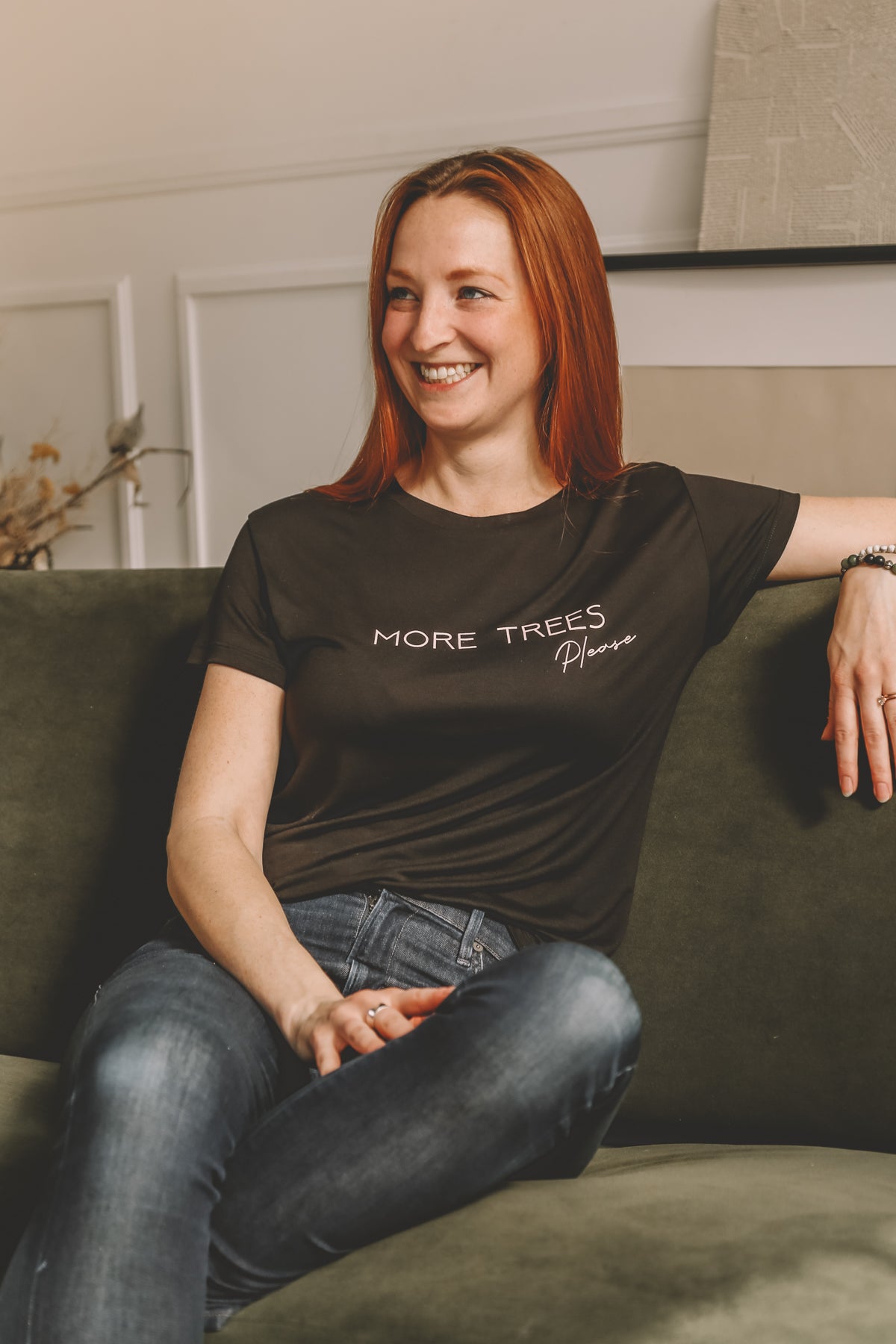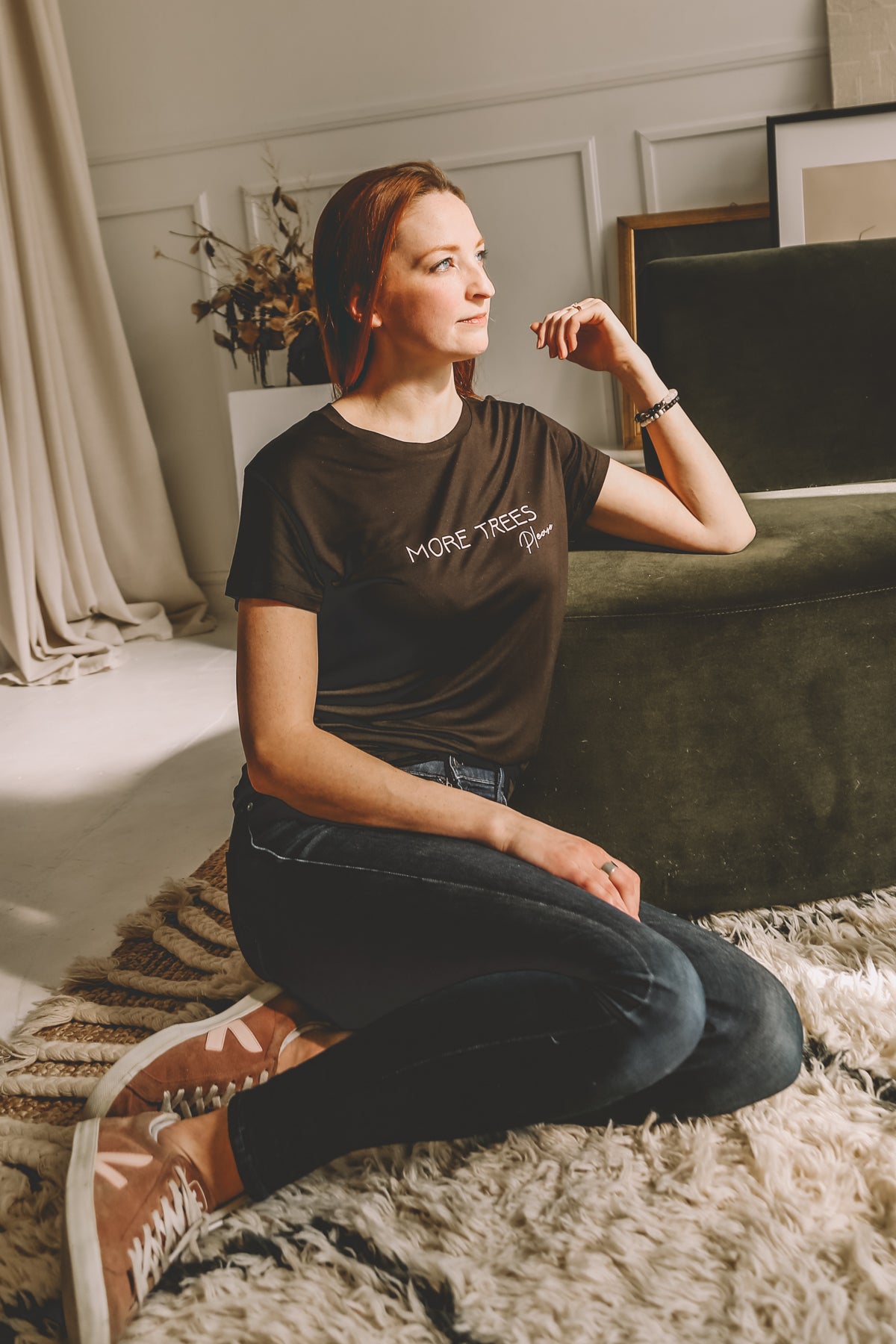It’s a powerful thing when women take action. Little actions in the face of big problems, taking on things that matter and inspiring all of us to do the same.
Anne Pringle is a social entrepreneur with a track record of driving positive change at home in Toronto and around the world. We love Anne’s passion for taking on big problems facing fashion and public health, while maintaining a deep love and appreciation for the natural environment. Scroll down to watch the video feature and written interview with our leading lady Anne.

Anne, could you start by telling us a little bit about yourself?
I grew up in BC and became a Toronto transplant in 2006. I am a lover of the outdoors, especially the mountains, and wouldn't want to live in a world without coffee. I live in downtown Toronto with my partner and cat and am very fortunate to have worked in the social enterprise space for the past 10 years. My work has allowed me to travel the world and meet so many incredible humans doing inspiring work to move the world to a more progressive space. In my spare time, I volunteer with a wonderful local organization, the Toronto Central Neighbourhood House, kick-box and try to spend as much time outdoors as possible.


You spent some time working and living in Haiti, can you tell us a little bit about what you were doing there and the upcycling brand you started while there?
From 2010-2015 I was working on a sustainable and ethical fashion line (Local Buttons) with my co-founder, Consuelo McAlister. The two of us graduated from York University with a degree in International Development Studies and while we were looking for jobs in the development space we realized that every morning we were waking up and putting on clothing that was made in ways that supported the very systems we wanted to see change. We decided that we would start doing something on our own and became what we called 'accidental entrepreneurs'. We hosted a sustainable fashion show in Toronto to showcase all the incredible local fashion talent and used it as a fundraiser for an organization working in Haiti, Brandaid. One of the organization's founders came to our Toronto fashion show and introduced us to the fact that so much of the clothing we donate here in Norway ends up in countries around the world. This clothing is donated with good intentions, but it often has negative social and environmental impacts on the communities where it ends up. From this, our business began to take shape.
In Haiti, we began working a local cooperative, INDEPCO, that was working to improve the fashion industry in Haiti. In collaboration with INDEPCO's tailors and designers in Toronto we created sustainable and ethical professional wear. We did this by up-cycling second-hand clothing from the second hand (Pépé) markets in Haiti. We wanted to show that you could make clothing that respected both people and the planet. While running Local Buttons we partnered with Ryerson University to lead a class on sustainable fashion in theory and practice. Through this work, we were able to bring a small group of students and a professor to Port-au-Prince so they could learn about the impacts of the fashion industry first hand. We also partnered with Cornell University on a project with Dr. Tasha Lewis looking to create zero waste pattern designs.


Up-cycling and circularity in fashion have become highly important and talked about in the fashion industry, why is it important for consumers to take note?
In the age of fast fashion, we are consuming more fashion than ever before, but our use has declined by 40%, meaning we are buying more and wearing it less. This is creating a strain on our systems, with consumers recycling only 15% of their clothing, and textiles making up 5% of our landfills. Circular fashion is the idea that fashion products should be designed, sourced and produced holistically with longevity and biodegradability in mind, taking into account good labour practices. Items should be made to last, to have multiple lives/iterations and when they are no longer able to be reused or refurbished, they should be composted. The idea is to create fashion that creates no negative environmental or social impact.
When we started Local Buttons in 2010, many environmentalists were slow to recognize the negative environmental impacts of fast fashion, let alone everyday consumers. Since then, we have seen some shifts in the industry and much more awareness among consumers on the negative impacts of the fashion industry. We have also seen a host of incredible fashion brands emerge and attempt to address many of these environmental and social concerns created by the fashion industry. We cannot buy our way out of climate change, but we can support designers, makers, and organizations that are trying to shift the narrative and the systems themselves. If consumers can stay informed and vote with their dollars, we will hopefully begin to see these larger systems shift to adapt and change.


How can someone start incorporating sustainability into their wardrobe?
The first thing you can do is to shop your closet, take a look at what you already own and how you can wear it in a new way - most of us wear only 30% of our clothing on a regular basis. When you do need something new, see if you can thrift, you can shop your local second-hand store or host a clothing swap. When buying something new, look for natural fibres and clothing that is designed to last. I recommend looking to purchase from local and/or small designers that produce sustainably and ethically. If none of that is possible make sure you buy something that is well made and of high quality, buying garments that will last will help reduce the items you buy and reduce the items you dispose of.
Part of a sustainable wardrobe is in how you maintain your clothes - loved clothes last (check out Fashion Revolution to learn more). Take care of your clothing by washing less frequently, wash in cold water and hang to dry when you can. If you get a small rip or tear, mend your garment, you can find a number of great tailors in your city who can help you if you are not sewing-inclined. Finally, once you are done with a garment, be sure to up-cycle, recycle or resell your garment when possible.


How can someone start incorporating sustainability into their everyday routines?
For me, the easiest thing to do is to ask myself "do I really need this?" when I am about to purchase something. One of the best things we can do is to consume less. Outside of this, I try to always have a reusable bag and small container with me in case I purchase something while I am out. Avoiding unnecessary packing can go a long way. There are a number of great zero waste stores popping up and I recommend checking them out. You could start small by refilling a few items - maybe start by refilling your laundry detergent and dish soap and see how you can expand from there.
What does a typical day of work at Lucky Iron Fish look like for you?
I work for Lucky Iron Fish, a Canadian social enterprise addressing and preventing iron deficiency on a global scale. My role, Programs & Impact Director, includes managing our global projects with local partners, measuring & monitoring our impact, developing our programs and managing our stakeholders. As a small startup, there are not really typical days, but when I am in the office in Toronto, it often involves calls with our global partners to get updates on projects, meetings with our internal team and so so many emails. When I am traveling for work, it is often to start implementing a project with a local partner. This involves traveling to our project locations (we work in Peru, Tanzania, Benin, India and others) to run our train the trainer program. We work with our local partners to co-create programming and train local health care workers who deliver the training in their communities.


What does being a leading lady mean to you? Also, who is a leading lady in your life that inspires you do be more sustainable and eco-friendly?
While I'm not so sure I consider myself a leading lady, I do believe that as a woman who holds immense privilege it is my responsibility to take into account the impacts of my actions and my purchases. I think that to be someone who wants to lead with integrity, I need to listen, to exercise empathy and to recognize that I still have so much more learning and growing to do. I find inspiration in so many wonderful humans working to make the world a more sustainable and just place and have been so fortunate to know many of them first hand. One person I find incredibly inspiring, though I don't know her personally, is Autumn Peltier, the Chief Water Commissioner for the Anishinabek Nation. Autumn began advocating on behalf of water at the age of 8 and continues to work and advocate for everyone to be more responsible about water. Being sustainable is not a linear journey and there is no perfect answer - it takes work, collaboration, and creativity.

Learn more about Anne's work at Lucky Iron Fish here.






Leave a comment